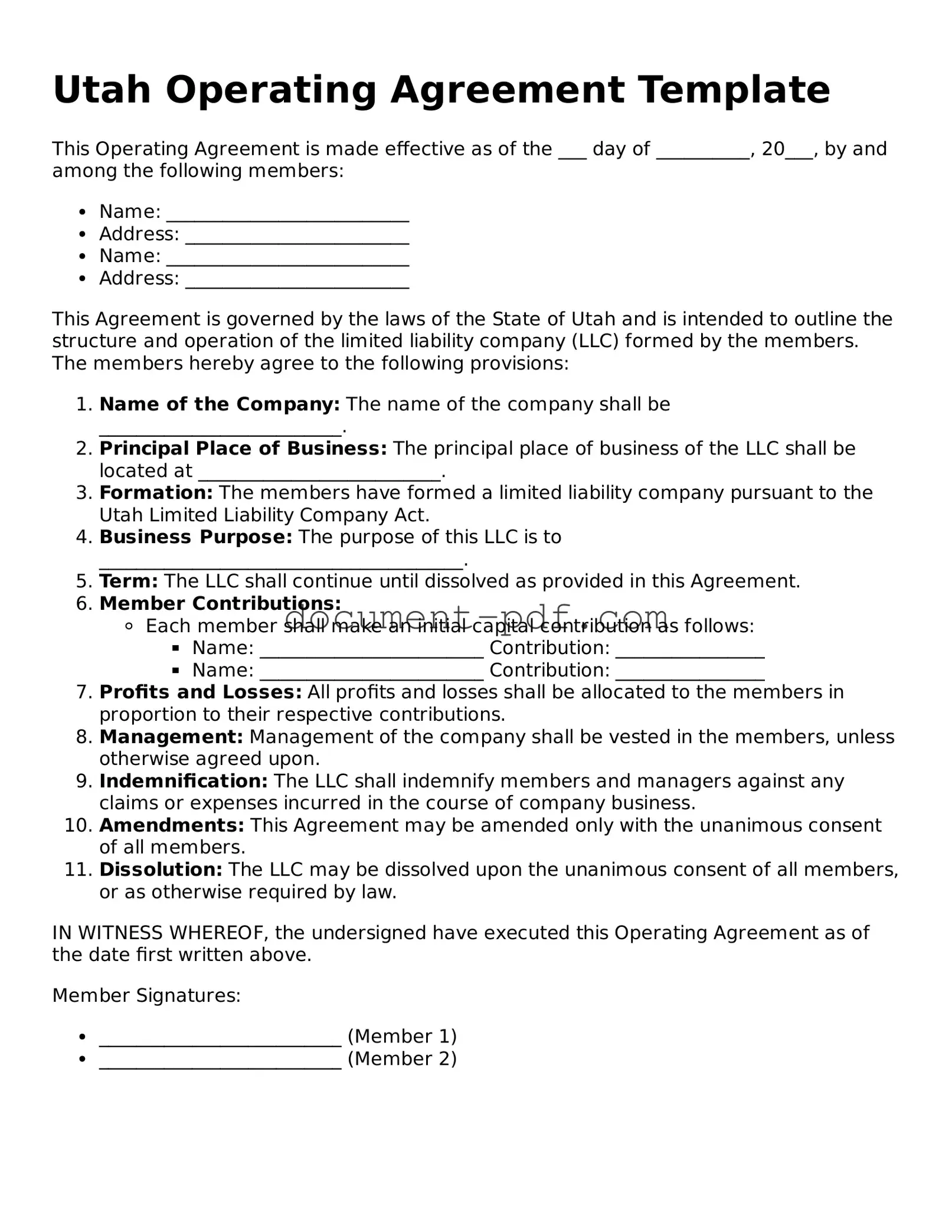The Utah Operating Agreement is similar to the LLC Operating Agreement, which serves a similar purpose in outlining the management structure and operating procedures of a limited liability company. Both documents detail the roles and responsibilities of members, how profits and losses are distributed, and the process for making decisions. This ensures that all members are on the same page regarding the operation of the business.
Another comparable document is the Partnership Agreement. Like the Operating Agreement, this document defines the relationship between partners, including their contributions, profit sharing, and decision-making processes. It helps to prevent misunderstandings and disputes by clearly stating each partner's rights and obligations.
The Corporate Bylaws are also akin to the Operating Agreement, but they pertain to corporations instead of LLCs. Bylaws outline how a corporation will be governed, including the roles of officers, the process for holding meetings, and voting procedures. Both documents serve to establish a clear framework for governance and operations.
The Shareholders Agreement is similar in that it governs the relationship between shareholders in a corporation. It addresses issues such as the sale of shares, voting rights, and the management of the company. Like an Operating Agreement, it aims to protect the interests of all parties involved and provide clarity on key operational matters.
The Joint Venture Agreement can also be compared to the Operating Agreement. This document outlines the terms and conditions of a temporary business partnership between two or more parties. It specifies each party's contributions, responsibilities, and profit-sharing arrangements, much like how an Operating Agreement does for LLC members.
The Membership Agreement is another related document, particularly for multi-member LLCs. It details the rights and obligations of each member, including their financial contributions and how decisions are made. This agreement helps to ensure that all members are aware of their roles and responsibilities within the LLC.
The Non-Disclosure Agreement (NDA) shares some similarities in that it protects sensitive information shared among members or partners. While it doesn't govern operational procedures, it ensures that proprietary information remains confidential, which can be crucial for the success of a business as outlined in an Operating Agreement.
The Employment Agreement can also be compared to the Operating Agreement in terms of defining roles within a business. This document outlines the terms of employment for individuals within the company, including job responsibilities, compensation, and termination procedures. Both documents help to clarify expectations and responsibilities within the organization.
Understanding the various agreements involved in business operations, including the New York Lease Agreement, is essential for legal clarity. A New York Lease Agreement is a legally binding contract between a landlord and a tenant, outlining the terms and conditions for renting a residential property. This document details the rights and responsibilities of both parties, ensuring clarity and protecting their interests throughout the lease term. For those looking to enter into a rental arrangement, filling out the form is essential; you can find it at https://pdfdocshub.com/.
Lastly, the Articles of Organization are essential for establishing an LLC but serve a different function than the Operating Agreement. While the Articles of Organization are filed with the state to legally form the LLC, the Operating Agreement provides the internal rules for managing the company. Together, they create a comprehensive framework for the business's operation and governance.
